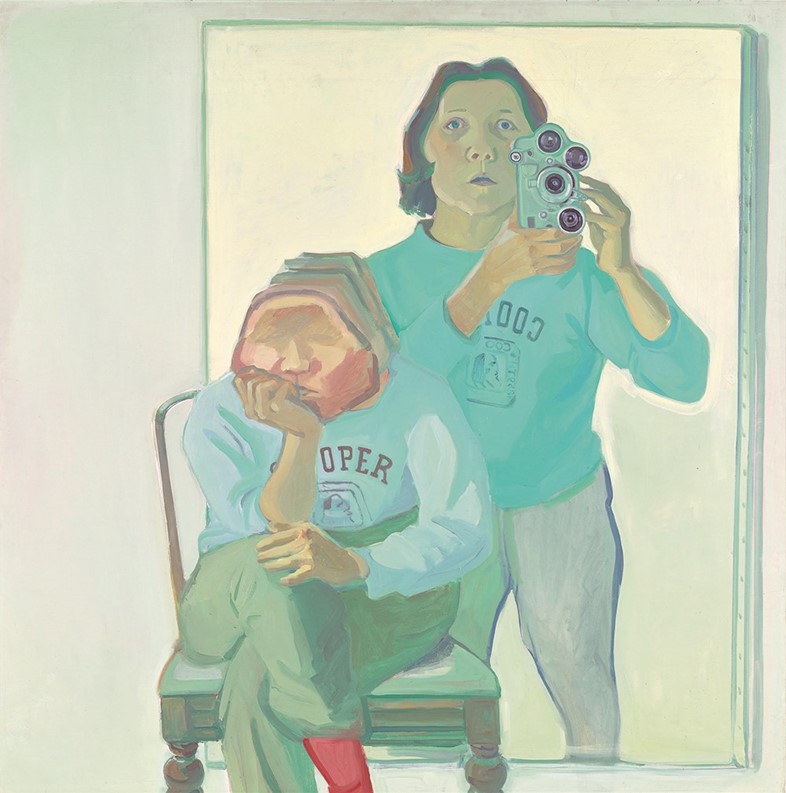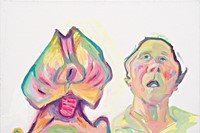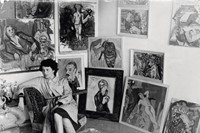As the first UK retrospective of her work opens at Tate Liverpool, we consider the subversive life and legacy of the Austrian painter and filmmaker
Who? Austrian artist Maria Lassnig was best-known for her radical and abstracted self-portraits, which pioneered an introspective theory of 'self-awareness'. Born in Kappel am Krappfeldm Austria in 1919, Lassnig was raised mostly by her grandmother, and attended the Academy of Fine Arts in Vienna during the Second World War. Her work there was technical and skillful, betraying little of the Abstract Expressionism she would later advocate – and which would see her denounced as a 'degenerate' artist by the Nazis.
After the war, she found inspiration in cubism and an improvisatory approach to painting called 'Art Informel'. Her work illustrated what she described as 'body consciousness', an awareness of the feeling of individual body parts.
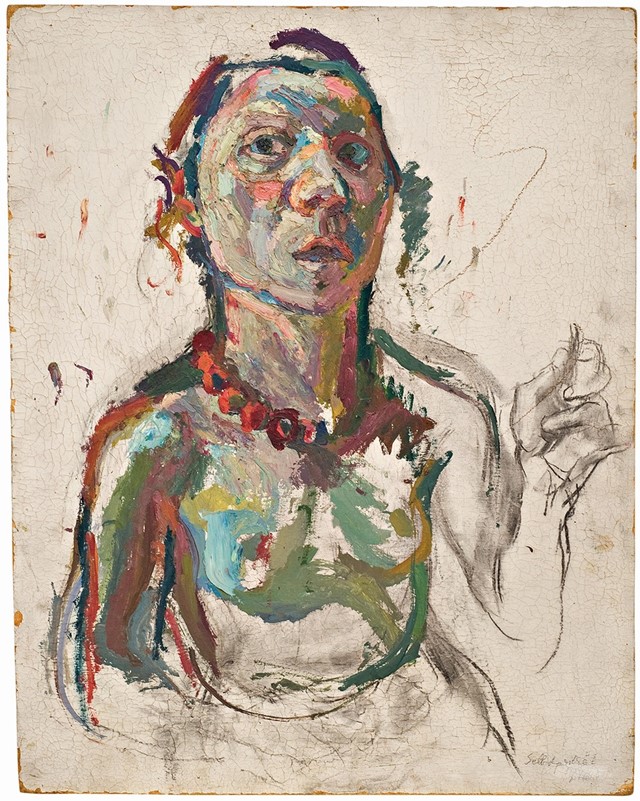
In 1951, she won a scholarship to study in Paris, where she met the founder of surrealism, André Breton. Throughout the next two decades, the movement had a marked influence on her work – evident through such pieces as the robotic Science Fiction (1963) and Breakfast With An Ear (1967). In the 1970s, Lassnig studied animated film at the School of Visual Arts in New York, USA – the "country of strong women," she called it – where she made the short films Selfportrait (1971) and Couples (1972). But it wasn't until 1992, with the creation of her autobiographical ballad Cantata, that Lassnig won critical acclaim for her film work.
In fact, it was only in her later years that she found true success and recognition. In 1980, she was appointed professor at Vienna University of Applied Arts – the first ever female professor in a German-speaking country – and also represented Austria at the Venice Biennale. She had her first UK solo exhibition at The Serpentine in 2008, and in 2013, won the Golden Lion for lifetime achievement at the Venice Biennale. She died the following year, at the age of 94.
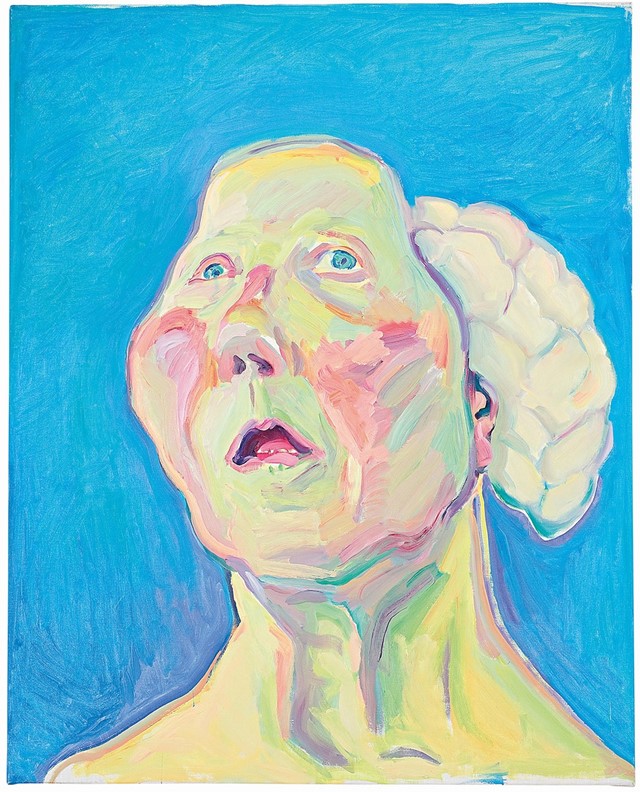
What? Opening today at Tate Liverpool, Maria Lassnig is the first retrospective of Lassnig’s work to be exhibited in the UK. Including 40 large-scale artworks, the exhibition is an extensive overview of the abstract artist’s life’s work, most of which was dedicated to the examination and exploration of the self, both in terms of mind and body. Including early pieces from 1940s Vienna, those created after the war in Paris and New York, and work from her final years, the display reveals the full extent of Lassnig's innovative vision. Her 1990 piece Lady with Brain, for instance – a painting of a bald woman with a brain attached to the side of her head – is one of many that raises questions about gender inequality, an issue still topical today; feminism is a motif she turned to often. Her vibrant, fragile – and sometimes humorous – works in oil, are as expressive as they are impressive, and it is little wonder that they continue to hold such value today.
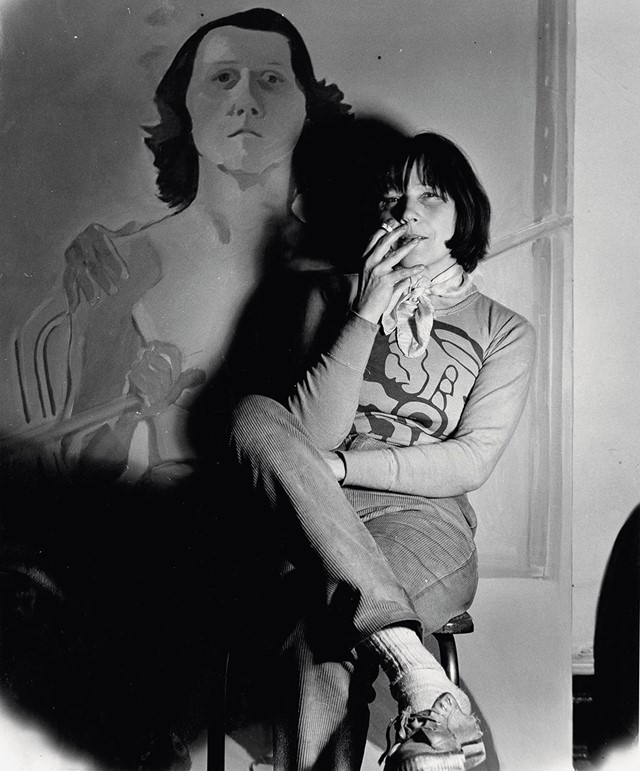
Why? "The only true reality is my feelings, played out within the confines of my body," Lassnig once said. And indeed, her work expresses those feelings – inner sensations – through depictions of the body. She painted from the "inside out" – taking inspiration from the parts of herself she could actually feel as she worked. Questions such as 'what does it feel like to be sitting in a chair?' Or, 'how am I standing?' were relevant, and many of her self-portraits omit body parts she couldn’t feel; her ears, her arms, parts of her head. Her work features a bold palette, and certain colours convey different moods – blue for hope, red for hurt.
Critics have labelled Lassnig’s work a precursor to today’s obsession with 'the selfie', but to the contrary, Lassnig’s self-depictions were analytical and founded on thought; they were never mere 'mirrors' of her own reflection. Through her work, she aimed to go "beyond skill, beyond the security of the real, into uncharted territory." Undoubtedly, she did just that.
Maria Lassnig is at Tate Liverpool until September 18, 2016.
